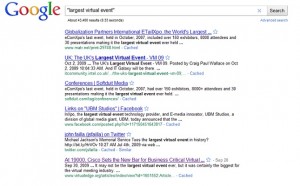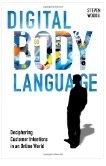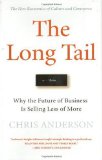Does Size Matter with Virtual Events?
 Many virtual events vendors and companies have touted that they have held the “largest” virtual event. Cisco GSX in 2009 with 19,000 attendees and AMD with 672,000 attendees in 2006 (Forrester Report, Market Overview: Virtual Event Platforms for B2B Marketers) are just a couple of examples. A quick search on the term “largest virtual event” yields over 40,000 results on Google – some referring to vendors with others referencing events.
Many virtual events vendors and companies have touted that they have held the “largest” virtual event. Cisco GSX in 2009 with 19,000 attendees and AMD with 672,000 attendees in 2006 (Forrester Report, Market Overview: Virtual Event Platforms for B2B Marketers) are just a couple of examples. A quick search on the term “largest virtual event” yields over 40,000 results on Google – some referring to vendors with others referencing events.
But does size really matter?
While an important indicator of a platform’s scalability, I think the focus on size overlooks other key factors when determing the value of virtual for your marketing and communications campaigns.
Metrics
The largest event may not necessarily yield the right results for your company. Many of the platform providers have detailed metrics regarding the number of attendees, length of stay, number of downloads and more. The challenge is how developed is their analytics engine to provide a layer of intelligence to interpret that data.
Questions to consider: What type of metrics are provided? What format are these metrics provided to me – excel data sheets or graphs? Are there lead scoring capabilities to identify A, B and C leads? If so, how does it work? Does the vendor help me to calculate ROI? A discussion on Focus, a resource for business professionals, provides more discussion about the ROI of virtual events.
User Engagement
Developing an experience that is unique to your company, ties back to your brand, and is engaging requires thoughtful planning. With hundreds and thousands of potential attendees, how do you structure the environment to intuitively create a flow within your virtual event. A critical element is mapping out how you want people to engage with one another, exhibitors and speakers within the event.
Questions to consider: Can I use a cookie cutter template or do I need something more custom? Will the vendor work with me or do I have to provide this? Do I have to use an agency in addition to the platform provider? How much time do I need to accomplish the desired experience? How do I create the right attendee flow within my virtual event?
Learning
The main component of any event is the content. Driving people to the virtual event is one aspect, while delivering content in a way that imparts learning is another element.
Questions to consider: Beyond how long somebody attends my event, what ways are there to measure short-term and long-term retention? Can you test or quiz the audience before, during and after an event? Will this cost more? What delivery method works best (video, audio, text, combo) and why?
Conclusion
While you host or build the largest event, a truly successful virtual event goes beyond size. It provides the right metrics with an engaging experience that delivers real learning to you audience.
What other factors are there to consider?
3 Comments
Leave a comment
About
Favorite Service
Recent Comments
- on Going Virtual Isn’t Necessarily the Answer to Replacing Your Physical Events
- on Going Virtual Isn’t Necessarily the Answer to Replacing Your Physical Events
- on Going Virtual Isn’t Necessarily the Answer to Replacing Your Physical Events
- on Going Virtual Isn’t Necessarily the Answer to Replacing Your Physical Events
- on Going Virtual Isn’t Necessarily the Answer to Replacing Your Physical Events
Ads by Google
Favorite Books
Marketing Blogs
PR Blogs
- KD Paine's Measurement Blog
- Micro Persuasion
Virtual Events & Meetings Blogs
- Cisco Virtual Environments
- It's All Virtual
- The Webinar Blog
- Virtual Edge Institute

 Cece Salomon-Lee is director of product marketing for Lanyon Solutions, Inc. and author of PR Meets Marketing, which explores the intersection of public relations, marketing, and social media.
Cece Salomon-Lee is director of product marketing for Lanyon Solutions, Inc. and author of PR Meets Marketing, which explores the intersection of public relations, marketing, and social media. 



[…] This post was mentioned on Twitter by funnelholic, Dennis Shiao and – csalomonlee, Social27Hub. Social27Hub said: RT @dshiao: Does Size Matter with Virtual Events? http://bit.ly/aVkKaI (by @csalomonlee) #virtualevents #eventprofs […]
Cece – agree with you on the importance of metrics, user engagement and learning. But “does size matter” for the underlying platform? In many cases, it does not, as most platforms in the industry can easily handle a few thousand simultaneous users.
Where it does matter, though, is when your planned event needs to support 10,000 simultaneous users or perhaps even 50,000. It’s here where the underlying platform “matters”, because a platform that can’t handle the load will result in a negative experience for attendees.
Fantastic post as usual, Cece.
As you know, 6Connex has focused on behavioral metrics that result in actionable reports for sales, marketing and other departments. As such, I’d add that element to your consideration about what kinds of metrics are important. For example, length of stay could mean people had to wait long periods of time for videos to download, or that it took a long time for folks to get acclimated to a virtual environment.
What’s better is to provide insight into what people engaged in, and how they did it. For example, did they add items to a virtual briefcase AND download it. Did they watch ENTIRE videos, or just click on them (this is an important insight for content strategy) and more. We think it’s so important, we designed our reporting engine to allow users to DEFINE what the most important behaviors are, measure those custom items in a separate report AND have that report emailed to appropriate personnel as often as the virtual experience organizer wants.
For virtual experiences to be successful they have to deliver the entire promise of the Web: connecting people with each other and with relevant content, on the user’s terms and in a format they desire.
Thank you for your continued first-class insights into this neck of the technology woods.
Much respect,
Scott